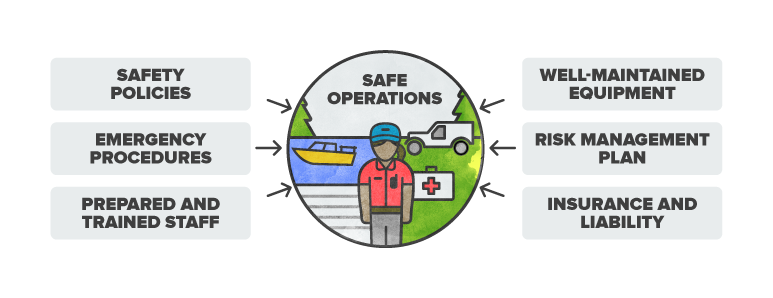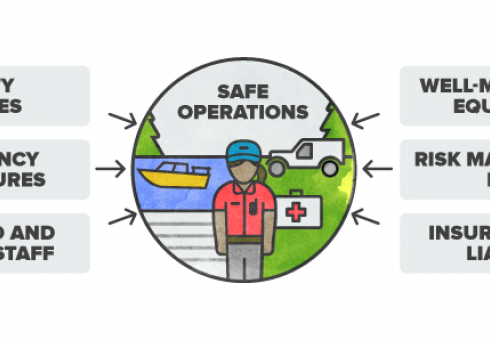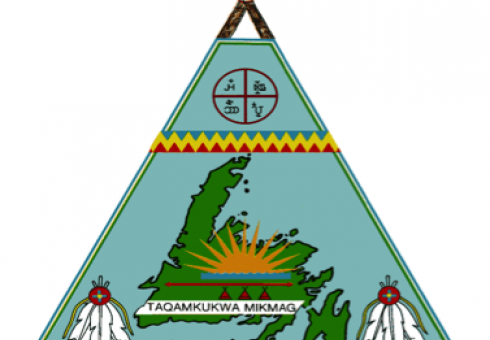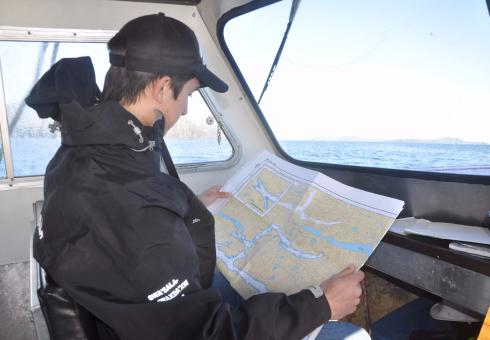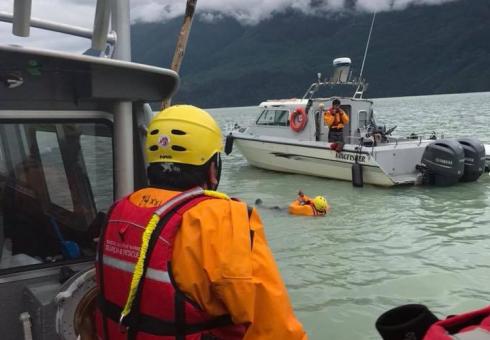Tips for Safe Operations
- Create a Safe Operations Plan that identifies potential risks, identifies safety policies and procedures to mitigate risks, describes program equipment and maintenance schedules, and addresses other aspects of safety of your operations.
- Involve your community, guardian crew, and experts in developing your Safe Operations Plan to ensure it accurately reflects the specific risks associated with your program activities and local conditions.
- Create easy to read and use documents that outline safety policies and procedures. These should be easy to understand and follow and always available to staff to reference.
- Make sure staff are well trained in what to do when unsafe conditions or circumstances arise. Support them by regularly briefing them, testing their knowledge, or running through mock scenarios. Ensure staff in the office also know what to do should a distress call come in or crews not return on schedule.
- Make equipment inspection and maintenance a routine part of your program. Set regular times for inspection, gear checks, maintenance, asset reporting, etc. Building this in to work plans will ensure that field equipment, vehicles, etc. are in good working order and potential concerns are identified before a problem arises.
